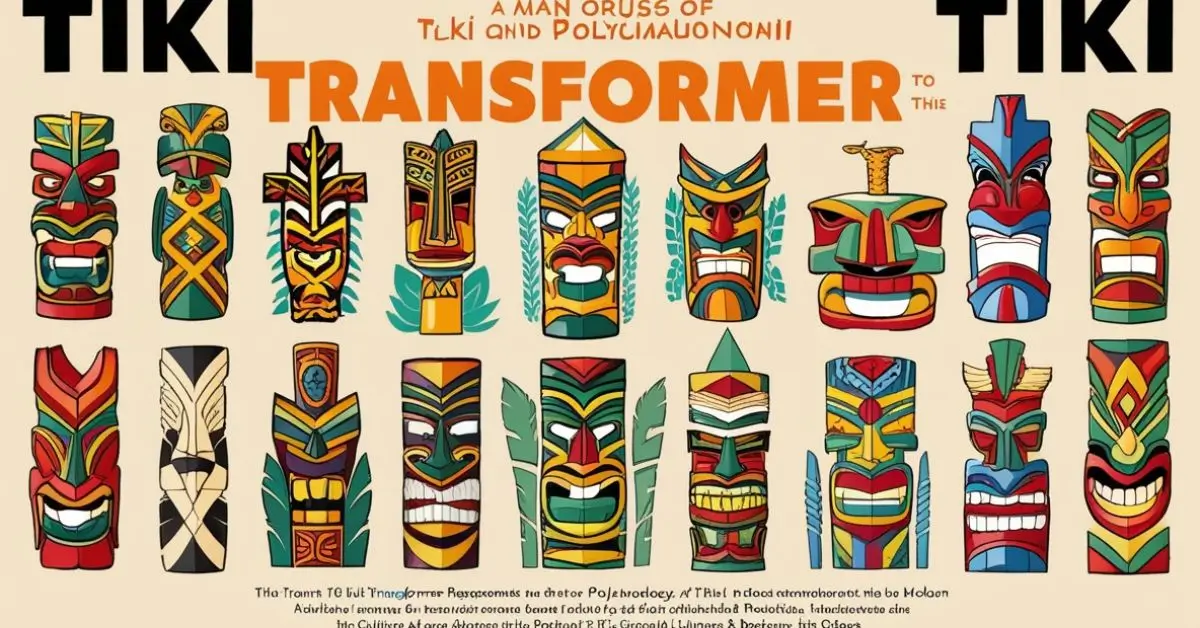The term “Tiki transformer” is intriguing, blending the cultural richness of Tiki with the idea of transformation. Tiki, rooted in Polynesian mythology, represents spiritual guardianship, protection, and creativity. Over time, the concept has evolved from its sacred origins to become a global cultural and aesthetic phenomenon. This article explores the multifaceted meanings of Tiki and its transformation across art, design, and modern culture.
Historical Roots of Tiki Culture
Tiki culture traces back to Polynesian mythology, where Tiki was regarded as the first human or a demigod. Ancient Polynesians created Tiki statues to honor deities and ancestors, believing these figures protected against evil spirits and brought blessings. Each type of Tiki had distinct characteristics and purposes:
- Kū: The god of war, symbolizing strength and protection.
- Lono: A deity associated with peace, fertility, and agriculture.
- Kāne: Representing creation and inspiration.
- Kanaloa: Linked to the sea, embodying adaptability and spiritual depth.
These statues were intricately carved, often from wood or stone, and placed in sacred locations such as temples or communal spaces. The intricate carvings conveyed messages, invoking divine favor or safeguarding communities.
Transformation in Cultural Representation
From Sacred Symbols to Global Aesthetic
The spiritual significance of Tiki began shifting in the mid-20th century, particularly in the United States. Tiki-inspired bars, restaurants, and decor gained popularity, blending Polynesian themes with exotic escapism. This cultural adaptation often focused on aesthetics over authenticity, introducing Tiki to a broader audience.
Symbolism in Design
Traditional Tiki statues often included symbolic elements like spirals (representing the cycle of life) and animal motifs such as lizards (fertility) and sharks (strength). These symbols have been repurposed in various forms, from tattoos and jewelry to home decor and digital media. Modern Tiki art often retains these symbols, blending them with contemporary styles while paying homage to their origins.
The Role of Tiki in Modern Spaces
Tiki Bars and Lounges
Tiki bars exemplify how the transformative power of Tiki has influenced modern leisure spaces. Known for their tropical ambiance, these establishments often feature bamboo furniture, Polynesian prints, and Tiki-inspired mugs for exotic cocktails like the Mai Tai and Zombie. Such spaces reflect Tiki culture’s ability to create immersive environments, blending tradition with contemporary design.
Home Decor
Incorporating Tiki elements into home decor can evoke a tropical and adventurous feel. Authentic Tiki carvings, coupled with natural materials like bamboo, shells, and driftwood, can create a harmonious aesthetic. Modern interpretations also include minimalist Tiki-inspired designs, ensuring adaptability for various interior styles.
Comparing Traditional and Modern Tiki
| Aspect | Traditional Tiki | Modern Interpretation |
|---|---|---|
| Purpose | Spiritual guardianship | Aesthetic and thematic appeal |
| Symbolism | Reverence for deities and ancestors | Exoticism and decorative use |
| Medium | Wood, stone | Diverse materials, including ceramics |
| Cultural Relevance | Sacred and regional | Global and commercial |
Challenges and Controversies
The global adaptation of Tiki culture has not been without its challenges. Critics argue that the commercialization of Tiki symbols often strips them of their cultural significance, reducing them to caricatures. Such practices can perpetuate stereotypes and overshadow the rich heritage of Polynesian communities.
Advocates for cultural preservation emphasize the importance of understanding and respecting Tiki’s origins. Educational efforts, such as highlighting the history and symbolism behind Tiki statues, can foster greater appreciation and informed usage in modern contexts.
Incorporating Tiki Respectfully
If you’re inspired by Tiki culture, it’s essential to incorporate its elements respectfully. Here are a few tips:
- Choose Authentic Designs: Opt for Tiki art created by Polynesian artists or those informed by cultural knowledge.
- Avoid Stereotypes: Steer clear of exaggerated or disrespectful representations.
- Learn the Symbolism: Understanding the meanings behind Tiki symbols enriches their use and ensures their integrity.
- Combine Traditional and Modern: Blend authentic Tiki motifs with contemporary styles for a balanced approach.
For inspiration, explore tutorials and design showcases, such as this video that delves into crafting Tiki-inspired spaces.
The Future of Tiki Transformation
As Tiki culture continues to inspire, its transformative potential remains a powerful force. Modern artists and designers are increasingly reinterpreting Tiki symbols, ensuring their relevance while honoring their origins. Digital platforms and virtual spaces also offer new opportunities for Tiki culture to thrive, connecting audiences with its timeless allure.
Conclusion
Tiki transformers symbolize the journey of an ancient cultural tradition into a modern phenomenon. While their visual appeal captivates global audiences, the heart of Tiki culture lies in its spiritual roots. By blending respect for its origins with creative adaptation, Tiki can continue to inspire and transform spaces, art, and lives worldwide.












